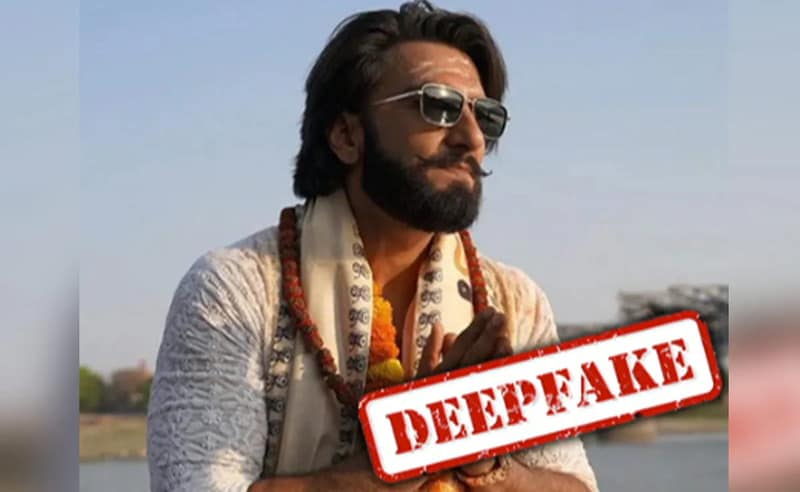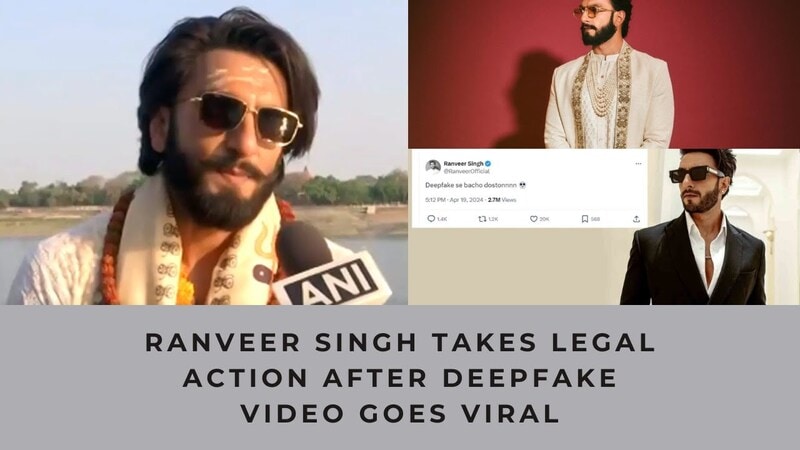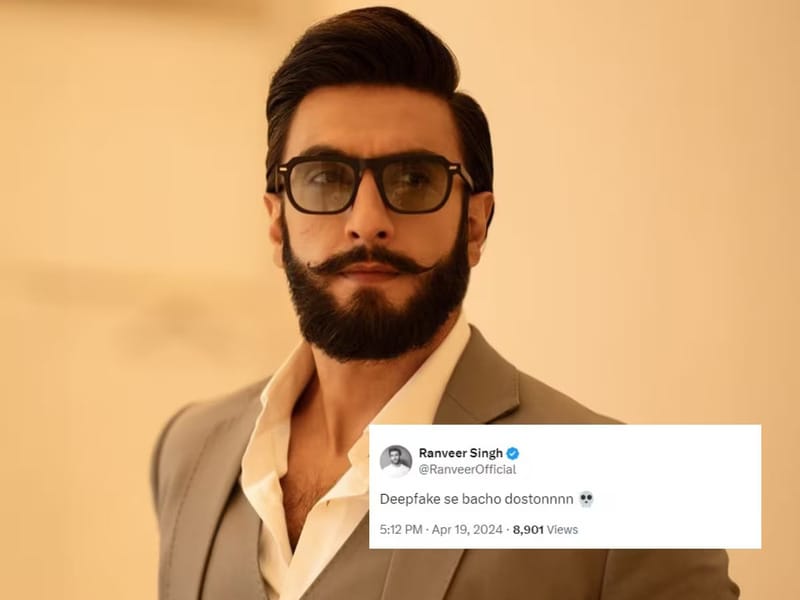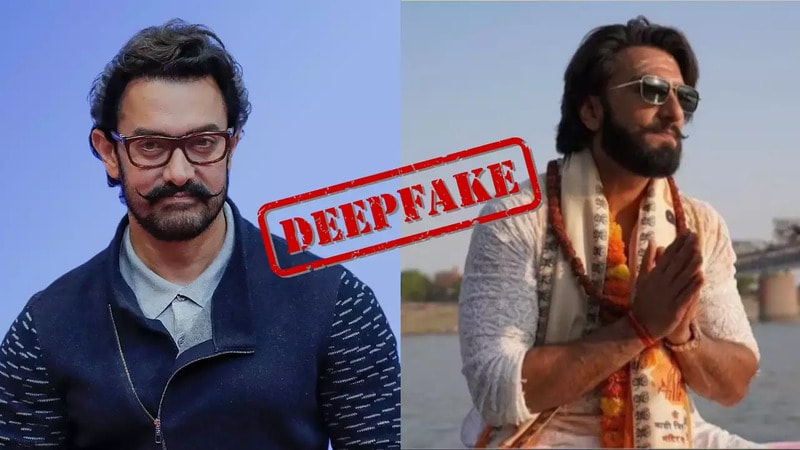In recent years, deepfake technology has advanced rapidly, making it easier than ever to create highly realistic fake videos. These AI-generated videos can manipulate someone’s appearance and voice, making it seem like they said or did something they never did.
Recently, Bollywood star Ranveer Singh became the latest victim of this technology. A deepfake video of him went viral, showing him criticizing the government and endorsing a political party. This deepfake video viral incident has sparked major controversy and highlighted the growing dangers of deepfakes in the digital age.

In this article
Part I. The Ranveer Singh Deepfake Video Viral Incident
Recently, Bollywood superstar Ranveer Singh found himself at the center of a digital storm due to a viral AI deepfake video of him. This AI-generated video showed Singh in a compromising and controversial light, depicting him criticizing Prime Minister Narendra Modi and endorsing the Congress party. The video quickly spread across social media, sparking heated debates and significant controversy.

In the viral deepfake video, Singh appears to speak passionately about critical issues such as unemployment and inflation, ultimately urging viewers to support the Congress party. The realistic nature of the video left many viewers convinced that the actor had genuinely made these statements. However, it was soon revealed that the video was a sophisticated deepfake, using advanced AI technology to manipulate Singh’s image and voice.
This AI deepfake video incident shocked Ranveer Singh’s fans and highlighted the dangers and potential misuse of deepfake technology. The rapid spread of the video underscored how easily false information can be disseminated and believed in the digital age.
Part II. Ranveer Singh’s Response
The moment the viral deepfake video featuring Ranveer Singh criticizing Prime Minister Narendra Modi and endorsing the Congress party surfaced, the actor took swift action. Singh categorically denied making any such statements or aligning himself with any political party.

Immediate Reaction and Public Statements
He emphasized that the video was a fabricated creation using advanced AI technology in a public statement.
- Denial of Statements and Endorsements
Ranveer Singh quickly responded to the viral deepfake video, categorically denying that he had made any statements criticizing Prime Minister Narendra Modi or endorsing the Congress party. He emphasized that the video was completely fake and not a reflection of his views or political stance.
- Warning About Deepfake Technology
In his public statements, Singh highlighted the growing dangers of deepfake technology. He urged his fans and the public to be cautious about such videos, explaining how easily they can be manipulated to spread false information. Singh’s message was clear: people should verify the authenticity of such content before believing or sharing it.
Legal Actions Taken
Ranveer Singh immediately took legal action and warned the public about the dangers of deepfake technology.
- Filing an FIR With the Cyber Crime Cell
Following the video’s spread, Singh took immediate legal action by filing a First Information Report (FIR) with the Cyber Crime Cell in Mumbai. This step was crucial in initiating a formal investigation into the matter.
- Details of the Police Complaint and Investigation
In the complaint, Singh’s team detailed how the viral deepfake video damaged his reputation and spread false information. The FIR outlined the need to identify and apprehend those responsible for creating and distributing the video. The Mumbai Cyber Crime Cell has since been working to trace the origins of the video and identify the perpetrators behind this malicious act.
Singh’s legal team has been actively cooperating with the authorities, providing any necessary information to aid the investigation. They have also called for stricter regulations and more robust technological solutions to combat the spread of deepfakes in the future.
Ranveer Singh’s proactive response to the viral AI deepfake video has brought significant attention to the potential harms of AI-generated content. By taking a firm stand and involving law enforcement, Singh hopes to not only clear his name but also raise awareness about the critical issue of deepfake technology and its implications for society.
Part III. The Impact and Public Reaction
The viral deepfake video of Ranveer Singh ignited a firestorm of debates on social media platforms. Users were divided, with some believing the authenticity of the video and others skeptical of its legitimacy. Hashtags related to the incident trended on Twitter, with users sharing their opinions and concerns about the misuse of AI technology.

Celebrity and Public Figures’ Statements
Numerous celebrities and public figures weighed in on the issue, condemning the use of AI to create misleading deepfake videos. Prominent Bollywood stars expressed their support for Ranveer Singh, emphasizing the need for stricter regulations to prevent such incidents in the future.
Public figures from various fields also spoke out, highlighting the ethical implications and potential harms of deepfake technology. Many noted the increasing sophistication of deepfakes and urged the public to be more discerning about the content they consume online. These statements helped to raise awareness about the broader implications of AI misuse.
Political Implications
The viral deepfake video had significant political implications, sparking discussions about its potential impact on public opinion and electoral processes. Analysts pointed out that such videos could be used to manipulate voters and influence election outcomes by spreading false information.
The video’s portrayal of Ranveer Singh criticizing Prime Minister Narendra Modi and endorsing the Congress party led to concerns about how deepfakes could be weaponized to create political unrest and deceive the electorate. Political parties and activists called for urgent measures to combat the spread of fake news and deepfakes, emphasizing the need for technological solutions and legal frameworks to protect the integrity of democratic processes.
Media Coverage
The incident received extensive coverage from major news outlets, further amplifying the conversation around deepfakes. Articles and news segments delved into the technical aspects of deepfake creation and the challenges of detecting and preventing them. Media coverage also highlighted the personal and professional impact on individuals targeted by such malicious content, using Ranveer Singh’s case as a prominent example.
The viral AI deepfake video incident involving Ranveer Singh has not only spotlighted the dangers of AI-generated content but also underscored the urgent need for collective action to address the challenges posed by this technology. Public and media reactions have been instrumental in bringing attention to these issues, fostering a broader dialogue about the ethical, political, and social ramifications of deepfakes.
Part IV. The Broader Context of Deepfakes in India
The incident with Ranveer Singh is not an isolated case. Like Aamir Khan, other celebrities have also been victims of deepfake technology. A viral deepfake video showed Aamir Khan purportedly promoting a political party, which he never did. This video also spread rapidly, causing confusion and controversy.
Such incidents highlight the increasing sophistication and accessibility of deepfake technology, allowing even amateurs to create convincing fake videos.

The Growing Trend of Political Deepfakes
Deepfakes are becoming a significant concern in India’s political landscape. These AI-generated videos can be used to falsely attribute statements or actions to politicians and public figures, potentially altering public perception and influencing elections.
Political deepfakes have the potential to disrupt the democratic process by spreading misinformation and creating false narratives. For example, a deepfake video of a politician making inflammatory remarks could incite unrest or sway voter opinions based on lies.
The viral deepfake video of Ranveer Singh is a prime example of how such technology can be weaponized for political purposes. This growing trend necessitates robust technological solutions and legal frameworks to detect and prevent the spread of malicious deepfakes.
The broader context of deepfakes in India underscores the urgency of addressing this issue. As more individuals and entities exploit this technology for nefarious purposes, the need for public awareness and regulatory measures becomes increasingly critical. The viral deepfake video incidents involving celebrities like Ranveer Singh and Aamir Khan serve as a wake-up call to the potential dangers and far-reaching impacts of deepfakes on society and democracy.
Note: Want to make ethical deepfake videos? Try FaceHub. It's user-friendly and promotes responsible content creation. Start creating ethical content with ease!
Conclusion
The viral AI deepfake video of Ranveer Singh criticizing the government and endorsing a political party highlights the alarming capabilities of AI technology. This incident and other notable deepfake cases in India underscore the urgent need for media literacy and public awareness. As deepfakes become more sophisticated, it’s crucial for the public to be vigilant and skeptical of such content.
The implications of deepfake technology for celebrities, politicians, and society at large are profound, potentially disrupting trust and democracy. By staying informed and cautious, we can better navigate the challenges posed by this digital age.


